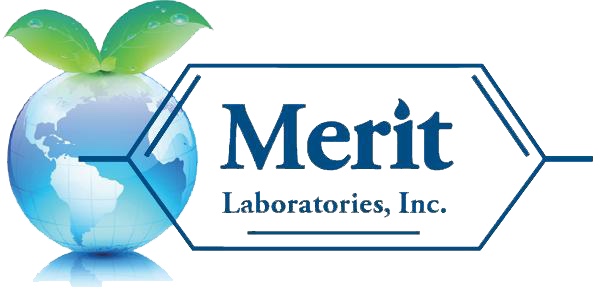Go with the Flow (Rate) and Select the 1.4-Liter Canister
Recently, Merit Laboratories published a technical post discussing canisters and sample volume required for TO-15 air samples. We brought light to the misconception that 6-Liter canisters are necessary to achieve desired detection limits. As a follow-up to that technical post, we decided to perform an internal analytical study comparing analytical data between 1.4-Liter and 6-Liter canisters.
Our team of scientists recently completed the analytical study for air samples to compare analytical results between 6-Liter and 1.4-Liter Silonite™ Ceramic Coated canisters. The study was performed by collecting the same samples in both 6-Liter and 1.4-Liter canisters. A total of seven split samples were collected and analyzed. Analytical data from the comparison study were in agreement; with an average relative percent difference (RPD) of only 4.6% for each of the 81 compounds analyzed by TO-15. The results of the study confirm that it is not the size of the air sample collected that counts, but sample collection flow rate that actually matters. See below for the average RPDs between the 1.4-Liter and 6-Liter samples for all 81 compounds. You just need to make sure enough sample is collected at a designated flow rate that will allow you to achieve the appropriate detection limit.
The move toward smaller sample volume is in concert with recent trends in the industry. Increased sensitivity in instrumentation combined with sample pre-concentration techniques have improved the signal-to-noise ratio, which reduces the volume of sample required to achieve regulatory reporting limits, while still allowing for multiple reruns if necessary. Our completed study confirms that recent advances in analytical testing have made it unnecessary to collect the large 6-Liter air sample for nearly all environmental project applications.
There are significant benefits to using the smaller 1.4-Liter canisters. A smaller canister size allows shorter sampling times when collecting based on flow rate, such as soil gas, which improves efficiency, reducing the amount of tracer gas needed. It also reduces shipping costs compared to the large and cumbersome 6-Liter canisters.
Merit Laboratories performs laboratory testing to support air projects at sites throughout the United States. Analytical testing performed by Merit includes the analysis of Volatile Organic Compounds (VOCs) by EPA Method TO-15. Merit is NELAP-accredited for the analysis of VOCs by TO-15. The laboratory maintains a large stock of sample collection media to air projects, including bottle vacs, Silonite™ Ceramic Coated canisters, flow controllers and helium shrouds.
TO-15 Comparison Study: 1.4-Liter vs. 6.0-Liter Canisters
Relative Percent Differences
Compounds (Average RPD)
- Freon 113 (0.04)
- Propylene (0.04)
- 1,2-Dichlorotetrafluoroethane (0.04)
- 1,3-Butadiene (0.04)
- Acetone (0.03)
- Isopropanol (0.03)
- Carbon disulfide (0.04)
- Acrylonitrile (0.04)
- tert-Methyl butyl ether (MTBE) (0.02)
- 2-Butanone (MEK) (0.02)
- Dichlorodifluoromethane (0.04)
- Chloromethane (0.04)
- Vinyl Chloride (0.04)
- Bromomethane (0.03)
- Chloroethane (0.03)
- Vinyl Bromide (0.04)
- Acrolein (0.04)
- Trichlorofluoromethane (0.04)
- Acetonitrile (0.03)
- Ethyl-tert-butyl ether (0.02)
- 1,1-Dichloroethene (0.04)
- Ethanol (0.03)
- 3-Chloropropene (0.03)
- Methylene Chloride (0.04)
- tert-Butyl alcohol (0.03)
- Diisopropylether (0.02)
- trans-1,2-Dichloroethene (0.04)
- Hexane (0.04)
- 1,1-Dichloroethane (0.04)
- cis-1,2-Dichloroethene (0.04)
- Vinyl Acetate (0.03)
- Ethyl Acetate (0.03)
- Tetrahydrofuran (0.03)
- Chloroform (0.03)
- 1,2-Dichloroethane (0.03)
- 1,1,1-Trichloroethane (0.03)
- Cyclohexane (0.04)
- tert-Amyl methyl ether (0.03)
- 4-Methyl-2-pentanone (MIBK) (0.05)
- 2-Hexanone (0.07)
- Carbon Tetrachloride (0.04)
- 2,2,4-Trimethylpentane (0.04)
- Benzene (MS) (0.04)
- Heptane (0.04)
- Trichloroethene (MS) (0.04)
- Methyl methacrylate (0.03)
- 1,2-Dichloropropane (0.04)
- 1,4-Dioxane (0.11)
- Bromodichloromethane (0.04)
- cis-1,3-Dichloropropene (0.04)
- Toluene (0.04)
- trans-1,3-Dichloropropene (0.04)
- 1,1,2-Trichloroethane (0.04)
- Dibromochloromethane (0.06)
- 1,2-Dibromoethane (0.06)
- Tetrachloroethene (0.06)
- Chlorobenzene (0.06)
- 1,1,1,2-Tetrachloroethane (0.05)
- Ethylbenzene (0.06)
- p,m-Xylene (0.06)
- o-Xylene (0.06)
- Styrene (0.06)
- Bromoform (0.06)
- 1,1,2,2-Tetrachloroethane (0.06)
- 4-Ethyltoluene (0.06)
- Isopropylbenzene (0.05)
- n-Propylbenzene (0.06)
- 1,3,5-Trimethylbenzene (0.06)
- 2-Chlorotoluene (0.06)
- tert-Butylbenzene (0.06)
- 1,2,4-Trimethylbenzene (0.06)
- sec-Butylbenzene (0.06)
- o-Isopropyltoluene (0.06)
- 1,3-Dichlorobenzene (0.07)
- 1,4-Dichlorobenzene (0.07)
- Benzyl chloride (0.07)
- 1,2-Dichlorobenzene (0.07)
- n-Butylbenzene (0.07)
- 1,2,4-Trichlorobenzene (0.11)
- Hexachlorobutadiene (0.11)
- Naphthalene (0.11)

